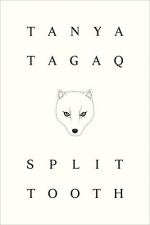|
This section contains 1,865 words (approx. 5 pages at 400 words per page) |

|
Non-Human Agency
Throughout the novel, the narrator anthropomorphizes non-human creatures and natural phenomena in order to illustrate a connection between environmental degradation and violence against Indigenous peoples. Early in the novel, the narrator uses verbs such as “win” and “scoff” to anthropomorphize the wind and the sun (6). She uses other vocabulary choices to illustrate the impacts of climate change in terms of non-human agency, writing that global warming will “coax stories out of the permafrost” and release “Earth’s whispers” into the atmosphere (6). Through this use of language, the narrator suggests that the natural world has a memory like that of humans. Later in the novel, the narrator speaks to the land directly, watching as “your mouth opens and emits a toothless scream [as] [o]il begins to seep from all of your orifices” (64-5). The land is described as “Writhing. Undying. Pleading” (65). The pronoun “you,” the...
|
This section contains 1,865 words (approx. 5 pages at 400 words per page) |

|




